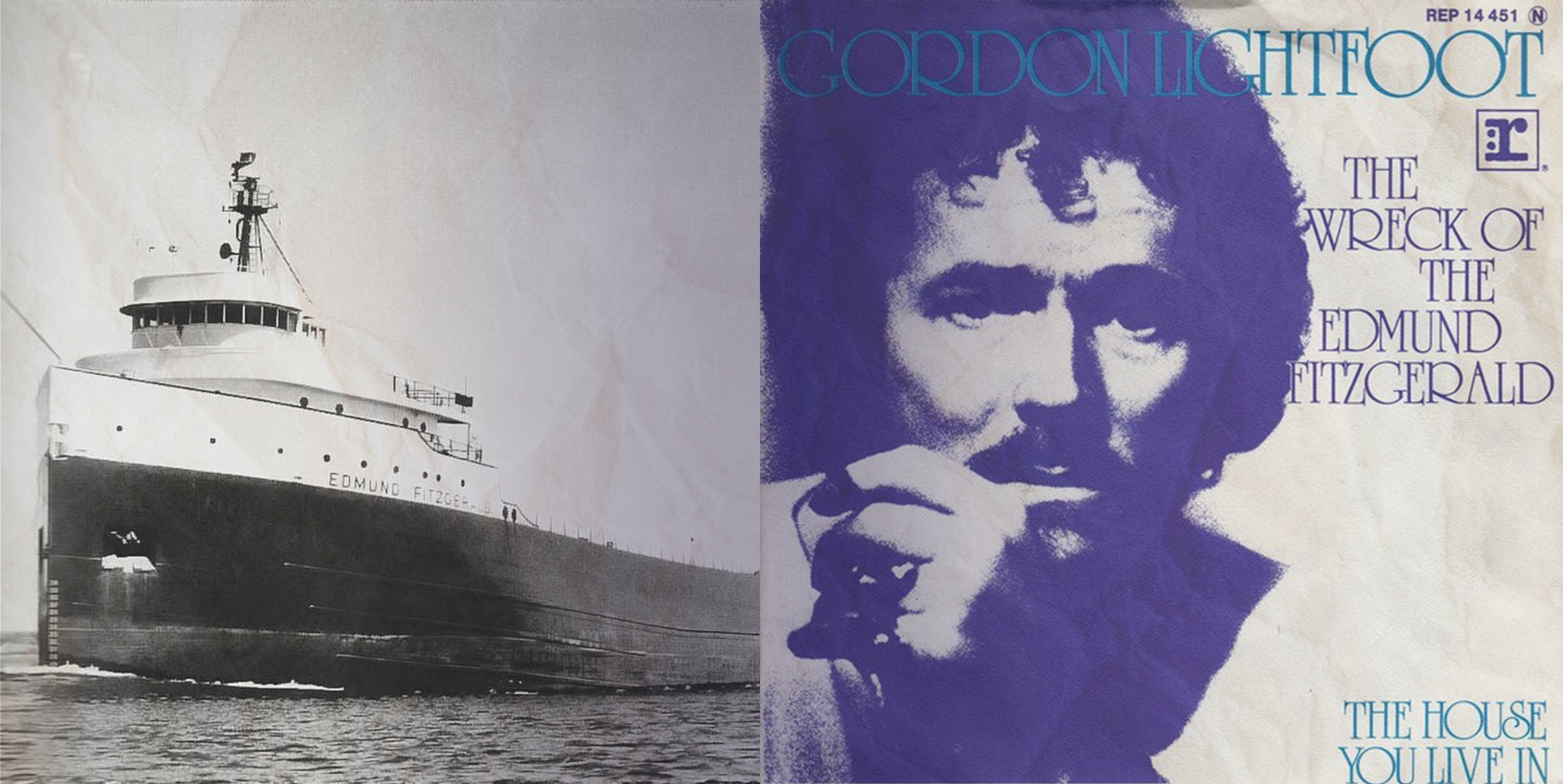
On Nov. 10, 1975, the SS Edmund Fitzgerald sank into Lake Superior, killing all 29 people aboard.
On Nov. 10, 2025, TikTok and Instagram were flooded with videos, images and edits commemorating the 50th anniversary of the tragedy.
But the tone of these memes is different from that of most trends. There’s a reverence and respect that’s rare on the internet. The jokes are rarely at the expense of the tragedy.
To understand why takes some explaining.
The wreck
The Edmund Fitzgerald wasn’t an ordinary ship. Well-known across the Great Lakes region, the ship was recommended for its quality of life and extensive amenities, making it one of the most sought-after jobs for sailors in the area. That demand meant it consistently had one of the most qualified crews in the region.
But in 1975, the gales of November came early.
The Edmund Fitzgerald was somewhat under-equipped in terms of safety features. It lacked many of the sensors that were standard for the time, and the ship’s 10-to-1 length-to-width ratio made it more unstable when faced with inclement weather than the average ship.
And Nov. 10, 1975 was about as inclement as it gets.
What started as a thunderstorm quickly escalated into freezing rain, then blinding snow, while 80 mph winds and four-story high waves pounded the deck and hull. The ship was last heard from at 7:10 p.m. before it sank below the surface.
As tragic as it is, the story of the SS Edmund Fitzgerald isn’t a unique one, so why does it exist so firmly in the public eye even five decades later?
“The Wreck of the Edmund Fitzgerald”
Canadian singer-songwriter Gordon Lightfoot grew up near the Great Lakes and had experience sailing on the very same areas the Edmund Fitzgerald had sailed on. Just a few weeks after the sinking of the ship, Lightfoot began to write lyrics for a song detailing the ship’s last moments.
With very little information about the vessel available to the public, Lightfoot used all the information he could gather, writing a six-minute folk-rock ballad that became one of the most iconic songs of the 1970s: “The Wreck of the Edmund Fitzgerald.”
The song develops slowly, adding more instrumentation as the storm intensifies, and Lightfoot chronicles the crew’s conversations amidst the difficulties aboard the ship. With haunting guitar melodies, slow-paced drum breaks and twinkling synthesizers, the track crashes and swells before settling again. Lightfoot’s use of an Irish funeral song’s melody adds to the tragedy of the instrumentation.
But as usual when it comes to Lightfoot, the highlight is the songwriting.
Lightfoot opens the track singing about the dimensions and characteristics of the boat itself, before discussing how the weather impacted the journey, stating, “that good ship and true was a bone to be chewed / When the gales of November came early.”
Lightfoot reportedly agonized over writing about the details of what happened on the ship itself, not wanting to get a single detail wrong, until his guitarist, Terry Clements, convinced him to do what Mark Twain would do: just tell a story. That’s where Lightfoot gives us lines like, “when suppertime came, the old cook came on deck saying / ‘Fellas it’s too rough to feed ya’ / At 7:00 p.m. a main hatchway caved in, he said / ‘Fellas it’s been good to know ya.’”
After detailing the last moments of the vessel, Lightfoot launches into some of the most heartbreaking lines on the track, including, “Does anyone know where the love of God goes / When the waves turn the minutes to hours?” The song’s final verse discusses the Maritime Sailor’s Cathedral in Detroit, detailing how “the church bell chimed till it rang 29 times / For each man on the Edmund Fitzgerald.”
Maybe the most incredible thing about “The Wreck of the Edmund Fitzgerald” is how it was recorded. The first version released, heard on the album “Summertime Dream,” is the very first time Lightfoot and his band ever played the song together. Lightfoot had to cue his drummer, Barry Keane, in with a head nod because Keane had never played the song before.
“The Wreck of the Edmund Fitzgerald” became one of Lightfoot’s most successful songs, but its true power came through its longevity. Each November, the song rises in popularity and commercial success as more people discover it – and, with it, the story.
None of the bodies of the deceased have ever been recovered. As Lightfoot lyrics remind, “Superior, they said, never gives up her dead / when the gales of November come early.”
A 50-year legacy
The sinking of the SS Edmund Fitzgerald would’ve likely been a regional tragedy, something memorialized at local museums but forgotten by most of the world. But Lightfoot’s music and songwriting connected with audiences in a way that articles and plaques never could.
Songs like “The Wreck of the Edmund Fitzgerald” are few and far between. Not many tracks have both the meaning and the staying power to create their own history. But when it does happen, it’s special. People still listen to a 1970s folk song today because the story it tells is compelling, because it humanizes a horrible situation and because it was made out of respect for those who fell victim.
Music can convey emotion in a way words on a page, a wall or in a conversation never could.
Lightfoot set out to make a song to show his respect for the 29 people who died on the ship. Fifty years later, that respect has transcended music into the public consciousness, immortalizing those who died too soon.
The church bell at the Maritime Sailor’s Cathedral in Detroit rings 29 times on Nov. 10 every year.
Every year but one.
After Lightfoot passed away in 2023, the bell rang 30 times, once for each person who lost their lives on the ship, and once for the man who made sure that their memories wouldn’t be lost too.











Be First to Comment